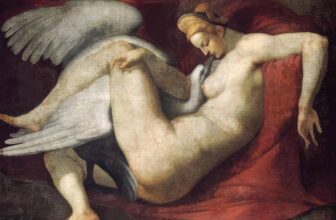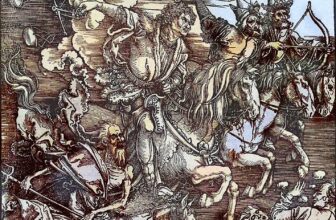What is Taddeo Gaddi’s Most Famous Paintings
Shopping Ads: Invest in Hidden Masterpiece: Rare Antique Oil Paintings For Sale. Limited Originals Available 💰😊 Are you looking for authentic hidden masterpiece? Explore old master antique oil paintings from the Renaissance and Baroque eras. From 16th-century portraits to 18th-century landscapes. Authenticity guaranteed, Old Master antique oil paintings for sale. Shop Now! 🎨 Renaissance And Baroque Art Old Master Portrait Paintings Landscape Antique PaintingsIn the vast and vibrant world of Italian Renaissance art, names like Giotto, Michelangelo, and Leonardo da Vinci often command the spotlight. Yet nestled among these giants is a figure whose contributions shaped the very foundation upon which the Renaissance was built, Taddeo Gaddi. A man of subtle genius, Gaddi was not only one of Giotto’s most loyal students but also a master painter and architect in his own right.
Though time has eroded some of the acclaim he once enjoyed, Taddeo Gaddi’s influence resonates in the chapels, churches, and museums of Italy and beyond. His paintings, filled with religious fervor and evolving techniques, offer a glimpse into a transformative period in Western art.
Let’s dive deep into the life, work, and legacy of this quietly brilliant artist.
The Story of Taddeo Gaddi
Taddeo Gaddi was born around 1290 in Florence, into a family with artistic roots. His father, Gaddo Gaddi, was a painter and mosaicist, well-regarded in the circles of Tuscan art. This environment of creativity and craft served as fertile ground for young Taddeo, who was soon apprenticed to none other than Giotto di Bondone, the revolutionary painter considered the father of the Italian Renaissance.
Under Giotto’s guidance, Gaddi flourished. He absorbed Giotto’s emphasis on realism, emotion, and three-dimensionality, qualities that were beginning to break away from the rigid and symbolic art of the Byzantine tradition. Giotto’s trust in Gaddi was so profound that he named him executor of his will and perhaps even his chief assistant, especially in large commissions like the frescoes in the Basilica of Santa Croce.
Taddeo Gaddi was not merely a follower, he was an innovator. After Giotto’s death in 1337, Gaddi carried forward the master’s artistic mission with dedication and finesse. His own voice began to emerge in his work, characterized by refined color, tender expressions, and more sophisticated spatial composition.
Besides being a painter, Gaddi was also known to be an architect, involved in projects such as the Ponte Vecchio in Florence. But it was through his painting that he truly left a lasting imprint.
What Is Taddeo Gaddi Known For?
Taddeo Gaddi is best known for being:
A Prominent Pupil of Giotto: He played a key role in continuing Giotto’s artistic revolution, moving art closer toward the naturalism that defined the Renaissance.
A Fresco Painter of Narrative Mastery: His storytelling ability in painting, especially through religious narratives, is among his most celebrated attributes.
A Contributor to the Evolution of Spatial Perspective: Gaddi began experimenting with perspective, making his architectural elements more believable, paving the way for the techniques perfected later by artists like Masaccio and Brunelleschi.
A Bridge between Proto-Renaissance and Early Renaissance: Gaddi’s art occupies that crucial transitional space, showing both Gothic and emerging Renaissance sensibilities.
Taddeo Gaddi’s Most Famous Paintings
1. Scenes from the Life of the Virgin (Baroncelli Chapel, Santa Croce, Florence)
This fresco cycle, completed between 1328 and 1338, is Gaddi’s magnum opus. Commissioned by the wealthy Baroncelli family, it decorates the walls of their chapel in Santa Croce, one of Florence’s most important churches.
The cycle includes scenes such as:
The Annunciation to Joachim
The Meeting at the Golden Gate
The Birth of the Virgin
The Presentation of the Virgin in the Temple
These works exhibit Gaddi’s talent for narrative pacing and composition. Notably, in the Presentation of the Virgin, Gaddi demonstrates an early understanding of architectural depth and perspective, showing a temple interior with surprising dimensionality.
2. Tree of Life (Santa Croce, Florence)
Above the high altar in Santa Croce is a Tree of Life fresco, often attributed to Taddeo Gaddi. Though much of it has suffered from time and damage, it remains an important symbolic and spiritual work. The composition centers around the crucified Christ on a tree that flourishes with branches representing virtues and theological ideas, a complex visual sermon that reflects the intellectual atmosphere of 14th-century Florence.
3. Adoration of the Magi (Tempera Panels)
This panel painting, possibly a predella or standalone altarpiece, showcases Gaddi’s use of vibrant color and gold leaf. His figures are tender, richly dressed, and expressive. While not monumental in scale, the artwork’s charm and intimacy make it a favorite among Gaddi’s surviving panel paintings.
4. Madonna Enthroned with Child and Saints
Many versions of this theme are attributed to Gaddi, with altarpieces located in various churches in Tuscany. These compositions echo Giotto’s influence but bring in more ornate Gothic elements, such as intricate halos and decorative patterns.
How Many Paintings Does Taddeo Gaddi Have?
Taddeo Gaddi’s body of work is difficult to quantify precisely because:
Some works are lost or heavily damaged.
Attribution is often contested, as many of his workshop assistants or later followers imitated his style.
He worked on fresco cycles (which are painted directly on walls and cannot be moved), as well as panel paintings and architectural designs.
Nevertheless, art historians attribute at least 20–30 major works to Gaddi, with dozens more possibly by his hand or his workshop. These include:
Large fresco cycles (e.g., Santa Croce, Florence)
Smaller devotional panels and altarpieces
Drawings and architectural plans
What Is the Most Expensive Painting of Taddeo Gaddi?
Because Gaddi worked mostly on frescoes, which are immovable and part of church architecture, his most significant works are not for sale and never enter the art market. However, some of his panel paintings and Madonna and Child compositions occasionally surface in auctions or private collections.
The most expensive known sale of a Gaddi painting likely concerns a panel attributed to Gaddi or his workshop, possibly reaching a six-figure sum in modern auctions. Specific sale records are rare due to the age and fragility of the work, and also because Taddeo Gaddi is not as widely collected as his more famous successors.
However, in the world of institutional art, his frescoes, like those in Santa Croce, are considered priceless for their cultural and historical significance.
Where Are Taddeo Gaddi’s Paintings Located?
Taddeo Gaddi’s works are spread across Italy and major European and American museums. Here are the main locations:
Florence
Santa Croce: The Baroncelli Chapel and the Tree of Life fresco
Uffizi Gallery: Several small panels and attributed works
Palazzo Vecchio: Frescoes and architectural elements
Rome
Vatican Museums: Some paintings attributed to Gaddi or his circle
Europe
Louvre Museum (Paris): Holds some Gaddi-attributed panels
Gemäldegalerie (Berlin): Early religious paintings from his workshop
United States
Metropolitan Museum of Art (New York): Works by Gaddi or his school
National Gallery of Art (Washington, D.C.): Attributed devotional pieces
These paintings often feature biblical narratives, saints, or Madonnas, subjects close to the hearts of 14th-century patrons and still capable of evoking wonder today.
Taddeo Gaddi’s Legacy
Despite being overshadowed by later Renaissance titans, Taddeo Gaddi holds a crucial place in the history of art. His contributions are manifold:
1. A Link Between Giotto and the Renaissance
He sustained and expanded Giotto’s innovations, serving as a bridge between the groundbreaking realism of the early 14th century and the even more sophisticated developments of the 15th century.
2. Influence on Future Generations
His son, Agnolo Gaddi, also became a notable painter, continuing the family legacy. Many Tuscan painters in the later 14th century were influenced by Taddeo’s narrative clarity, architectural backgrounds, and gentle humanism.
3. A Devotional Voice
Gaddi’s works are filled with spiritual intensity and devotion. His figures are not distant icons but emotional beings engaged in divine drama, a significant step toward the psychological realism that defines Renaissance art.
4. Architectural Contributions
Though primarily known as a painter, his work on Ponte Vecchio shows that Gaddi’s creativity extended into civil engineering and urban design, a rare blend of skills for a 14th-century artist.
Taddeo Gaddi may not dominate the headlines of art history, but his quiet flame helped ignite a blaze that would consume and transform the Western world’s approach to visual storytelling.
He was a loyal student, a capable architect, a devoted Christian, and an artist whose works still whisper their stories from stone walls and golden panels. Whether it’s the tender face of the Virgin Mary in Santa Croce or the lively folds of a saint’s robe in an altarpiece, Gaddi’s touch is unmistakable, subtle, sincere, and enduring.
For those who take the time to seek out his works in Florence or study his legacy in museum collections, Taddeo Gaddi offers something precious: not only a glimpse into the roots of Renaissance art but also a lesson in dedication, humility, and beauty.
In the shadow of giants, sometimes it is the quiet ones who build the bridge to greatness.




